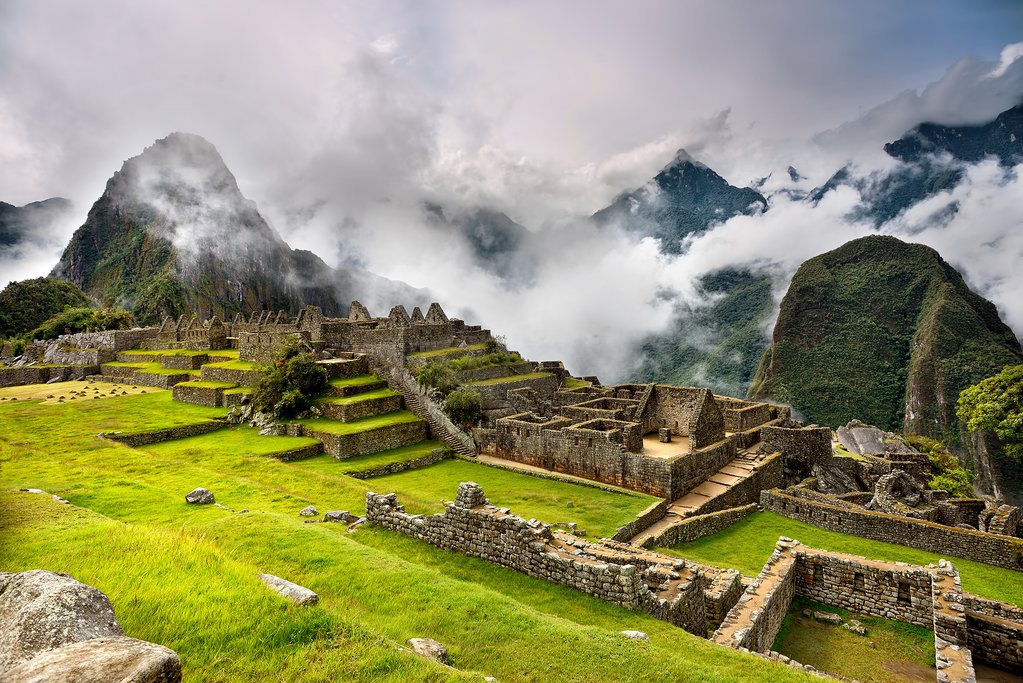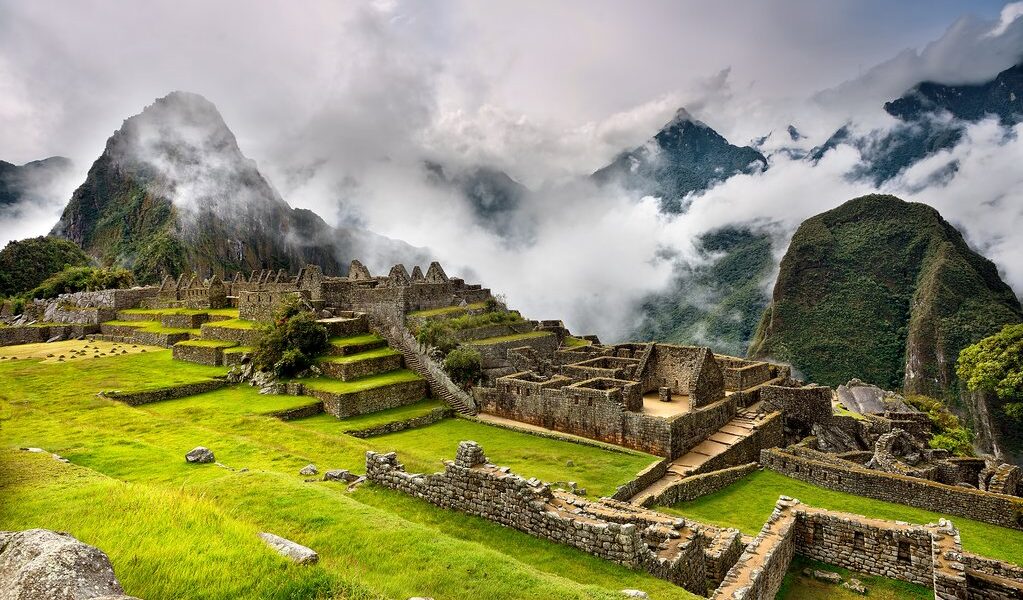
The Inca Trail gets most of the publicity, but there are also several hikes within the Machu Picchu complex itself, offering more fabulous mountain scenery and some unique perspectives on the ruins. These hikes, ranging from one to three hours in length, can be great ways of escaping the crowds and adding some color to your time in Machu Picchu.
## Exploring the Majestic Hikes of Machu Picchu: A Comprehensive Guide
Machu Picchu, the lost city of the Incas, is not only a marvel of ancient architecture but also a gateway to breathtaking hiking experiences. Nestled high in the Andes Mountains, this iconic site offers a range of trails, each with its own unique charm and challenge. Whether you’re an avid trekker or a casual explorer, Machu Picchu has something to captivate your adventurous spirit.
Within the boundaries of the Machu Picchu Citadel, there are two exceptional day hikes that require pre-arranged permits: the renowned **Huayna Picchu** and the equally impressive **Machu Picchu Mountain**. Both of these peaks offer unparalleled panoramic views of the surrounding landscapes and the intricate stonework of Machu Picchu itself. It’s important to coordinate your hiking plans with your travel specialists in advance to ensure you secure the necessary permits and optimize your time within the citadel. Both trails are able to be completed on the same day as your guided tour of Machu Picchu itself, if you plan your visit carefully.
**Huayna Picchu**, often referred to as Wayna Picchu, is arguably the most sought-after hiking experience in Machu Picchu. Its popularity stems from its iconic shape and the stunning vistas it provides. Due to its high demand, permits for **Huayna Picchu** tend to sell out quickly, sometimes months in advance. If you find that **Huayna Picchu** permits are unavailable, fret not, as **Machu Picchu Mountain** offers a fantastic alternative with equally rewarding views. Prepare to be mesmerized by the bird’s-eye perspective of Machu Picchu from either of these vantage points.
### Huayna Picchu: Conquering Machu Picchu’s Most Popular Trek
**Permit Availability:** A limited number of 400 permits are issued daily for Huayna Picchu, making early booking essential. Due to the enormous popularity of this hike, it is not uncommon for permits to be completely reserved months in advance of your intended visit.
**Trailhead Entry Times:** Entry to the **Huayna Picchu** trail is staggered to manage the flow of hikers. The first group of 200 permit holders can enter between 7:00 am and 8:00 am, while the second group of 200 can enter between 10:00 am and 11:00 am. Be punctual to avoid missing your allocated time slot.
**Duration:** The **Huayna Picchu** hike typically takes between 1 and 2.5 hours to complete, depending on your fitness level and the pace you set. Allow ample time to savor the views at the summit.
**Difficulty:** The trail to **Huayna Picchu** is considered challenging and steep. There are sections where you’ll need to use your hands for balance, particularly along the narrow pathways. A reasonable level of fitness is required to tackle this ascent.
**Elevation Gain:** The **Huayna Picchu** hike involves an elevation gain of 952 feet (290 meters). Be mindful of the altitude and take necessary precautions to avoid altitude sickness.
**Huayna Picchu**, easily recognizable by its distinctive tooth-like shape, towers majestically above the main Machu Picchu citadel, beckoning hikers with its promise of unparalleled views. Standing at 8,923 feet (2720 meters), it surpasses the Machu Picchu complex by approximately 850 feet. Altitude sickness can be a consideration for hikers, even if they haven’t experienced any adverse effects at the main ruins. The name “Huayna Picchu” is derived from the Quechua language and is commonly interpreted as “young peak.”
The trailhead is conveniently located on the north side of the main complex. Look for a clearly marked hut where you’ll need to sign in both before embarking on your hike and upon your return. The trail winds its way through a captivating section of Inca tunnel, adding a touch of historical intrigue to your adventure. Along the way, you’ll encounter a ladder securely fixed to the cliff face, an intriguing overhanging cave, and enchanting patches of cloud forest that create a mystical atmosphere. A separate path branches off the main ascent, leading to a descent around the back of **Huayna Picchu** and the captivating Temple of the Moon.
While the hike may appear dauntingly steep from the plaza below, no specialized technical climbing skills are required to conquer it. However, the zigzag path does involve scrambling at certain points, requiring you to use both your hands and feet for stability. The trail can also become slippery in wet weather, so exercise extreme caution during both your ascent and descent. Proper footwear is highly recommended.
### Machu Picchu Montaña: A Picturesque Hike Showcasing Valley Views
**Permit Availability:** Similar to **Huayna Picchu**, **Machu Picchu Montaña** (Machu Picchu Mountain) also has a daily limit of 400 permits. Securing your permit in advance is advisable, though it tends to be less competitive than **Huayna Picchu**.
**Trailhead Entry Times:** Entry times for **Machu Picchu Mountain** are divided into two groups: 7:00 am to 8:00 am for 400 permit holders, and 9:00 am to 10:00 am for the remaining 200.
**Duration:** The **Machu Picchu Montaña** hike typically takes between 2.5 and 3 hours to complete, providing ample time to immerse yourself in the stunning scenery.
**Difficulty:** While still considered challenging, the **Machu Picchu Montaña** trek is generally regarded as less steep than **Huayna Picchu**. The path is also wider, making for a more comfortable ascent.
**Elevation Gain:** Prepare for a significant elevation gain of 2,038 feet (621 meters) as you ascend **Machu Picchu Montaña**. Pacing yourself and staying hydrated are crucial for a successful hike.
In contrast to the steeper **Huayna Picchu** trail, the **Machu Picchu Montaña** (Machu Picchu Mountain) trek offers a more gradual ascent along a wider path. One of the key advantages of choosing this hike over **Huayna Picchu** is the relative ease of obtaining a permit, as it tends to be less popular. The steady, yet demanding, climb culminates in a summit that soars over 10,000 feet, dwarfing **Huayna Picchu**.
From the summit, you’ll be rewarded with the area’s most expansive and captivating views. In addition to breathtaking panoramas of the entire Machu Picchu complex, you’ll be able to see all the way along the renowned Inca Trail to the picturesque ruins of Wiñay Wayna. The trailhead for **Machu Picchu Montaña** is located in the southern part of the Machu Picchu citadel.
## Exploring the Non-Permitted Hikes of Machu Picchu
Beyond the permit-required hikes, there are a number of other trails within and near the Machu Picchu Citadel that provide interesting viewpoints and immersion in the surrounding scenery. These include the **Sun Gate**, also known as Intipunku, the **Inca Bridge**, a secret entrance, and **Putukusi**, located outside of the citadel.
### Sun Gate: Experiencing the Original Entrance to Machu Picchu
**Duration:** The hike to the **Sun Gate** typically takes between 3 and 4 hours to complete, depending on your pace and how long you spend enjoying the views.
**Difficulty:** The trail to the **Sun Gate** is considered moderate, involving a combination of dirt trails and Inca stone paths. A reasonable level of fitness is recommended.
**Elevation Gain:** The **Sun Gate** hike involves an elevation gain of 952 feet (290 meters).
The **Sun Gate**, or Intipunku, holds historical significance as the original entrance to Machu Picchu for the Incas. Those undertaking the classic 4-Day Inca Trail will enter Machu Picchu through this very gateway. Day-trippers to Machu Picchu can also experience the allure of the **Sun Gate** by starting from the Machu Picchu Mountain trailhead in the southern part of the citadel and following the clearly marked signs. The journey will take you through a varied terrain that demonstrates the remarkable engineering of the Inca civilization.
### Inca Bridge: Unveiling Machu Picchu’s Secret Entrance
**Duration:** The hike to the **Inca Bridge** is relatively short, taking approximately 40 minutes to 1 hour to complete.
**Difficulty:** This trail is considered easy, making it accessible to a wide range of fitness levels.
**Elevation Gain:** The elevation gain on the **Inca Bridge** trail is negligible.
The **Inca Bridge**, often referred to as the secret entrance to Machu Picchu, is a hidden gem that is frequently overlooked by visitors. If you have some extra time to spare, this trek is well worth undertaking. The trail leads to an alternate entrance to Machu Picchu that was once used by the Incas.
The bridge itself is ingeniously constructed into a spectacular path along a sheer mountainside. The simple plank bridge could be quickly removed to thwart the progress of any unwanted visitors, protecting the sanctity of Machu Picchu. While you can only view the drawbridge from a distance due to safety concerns, the experience is nonetheless awe-inspiring. The trailhead is located across from the Hut of the Caretaker at the Funerary Rock.
### Putukusi: Gaining Another Perspective on Machu Picchu
**Duration:** The hike to **Putukusi** typically takes around 3 hours out and back, allowing ample time to soak in the panoramic views.
**Difficulty:** This trail is considered challenging, involving scaling near-vertical ladders and navigating steep slopes. A high level of physical fitness is required.
**Elevation Gain:** The **Putukusi** hike involves a substantial elevation gain of 1509 feet (460 meters).
**Putukusi** (or Phutuq K’usi) offers a good, free alternative to the often-crowded Machu Picchu complex. Situated on the opposite side of the valley from Machu Picchu, this trail offers spectacular views across to the famous ruins, allowing you to appreciate their grandeur from a unique perspective.
Be aware that this challenging trail, which involves scaling several ladders, is not as well-maintained as the trails within Machu Picchu itself. The trail can also become washed out after periods of rain, so exercise caution. The trailhead begins at a stairway a short walk west of central Aguas Calientes (along the railway tracks). This hike is recommended for those who are in excellent physical condition and possess a strong sense of adventure.
By completing even one of these trails, your trip to Machu Picchu will become so much more enriching. Be sure to plan your trip well in advance so that you don’t miss out on any of the breathtaking sights.
B-2067

